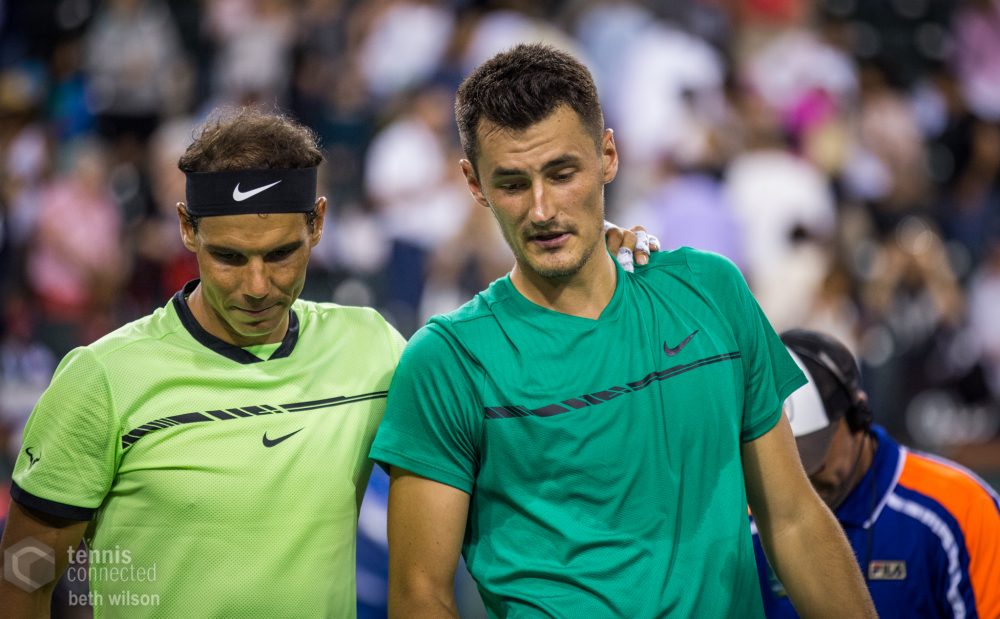Welcome to Tennis Elbow, the column that looks back on the week that was in the world of tennis. This week, Charles Blouin-Gascon explains why the few weeks in February are crucial on the tennis calendar.
It’s easy to forget, but there is more to the tennis calendar than the royalty of the four Grand Slams and their valets, the Premium 5 and Masters 1000 events.
Sure, the greater public as well as the players themselves put the greatest importance on the bigger events and tournaments on the tennis calendar and move downward from there—but this isn’t how the mere mortals survive.
The tennis calendar, after all, is a year-long sprint and not every week gets to put on a, say, Monte-Carlo Masters. Overall, this is a good thing because with the way the Rafael Nadals, Novak Djokovics, Roger Federers or Serena Williamses of the world are winning and capturing the most prestigious tournaments on their respective tours, well there wouldn’t be anything left to eat for their competitors.
You know, how do the Kiki Bertenses, Aryna Sabalenkas, Gael Monfilses or Diego Schwartzmans remain at or near the top of their profession over weeks and months of a number of different tennis seasons? They do so by showing up at on the sport’s biggest stages, yes, but they rarely if ever take it to the big guns and defeat them. The aforementioned players and a slew of others from tennis’s middle class make a living during the dark days of February at the so-called smaller events.
DF sur la première balle de match, mais ça passe sur la seconde et voilà un troisième titre à Montpellier pour Monfils. 7-5,6-3 vs Pospisil
— Carole Bouchard ?? (@carole_bouchard) February 9, 2020
Monfils stays around because in February, he’s willing to head to his native France and compete in Montpellier. He does so probably because of a large number of reasons, including the fact that the tournament is home, that it’s a tournament he has already won twice and that he knows it’s a place where he’s among the favourites, if not the single favourite, every time he signs up. He heads there because, well before you know it, waddayaknow Monfils has added a third Montpellier title and 250 points to his tally.
The weeks after the Australian Open is when the mere mortals of our sport make their living, when they earn the points that can make all the difference in the end. We might look at the Cordoba Open for the ATP or the GSB Thailand Open for the WTA, and scoff at their significance—but players understand it actually. Dusan Lasovic understands that if he wins the Rio Open next week, then he might rise from 24th and overtake Denis Shapovalov at No. 16. That’s not too shabby.
The weeks after the Australian Open aren’t when Alexander Bublik becomes a top 10 player but winning an event like the New York Open would bring the 54-ranked player in the world up to No. 38. It’s not life-changing, but it sure as hell helps.
And hell, it even helps the top players when they do compete: remember Nadal competing in Latin and South America a few years back as he was coming back from a long layoff and gearing up for the looming clay-court season? Even for Nadal, a title in February was just about as critical as these things get.
The weeks after the Australian Open are also when the quote-unquote top players get to rest to prepare for the coming events. They’ve just finished the first Grand Slam of the year, where they have (presumably) done very well, and they now turn their focus to the two-headed March monster of the BNP Paribas Open in Indian Wells and the Miami Open back-to-back.
Ultimately, this period probably proves one thing in tennis—that what matters isn’t exactly where or how you win. It’s simply that you win.
Follow Charles Blouin-Gascon on Twitter @RealCBG














